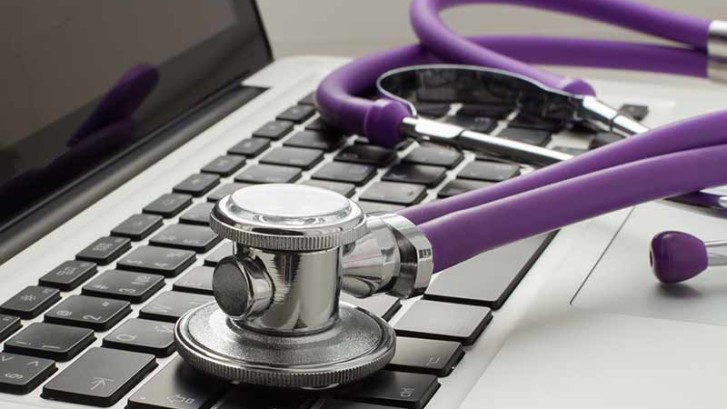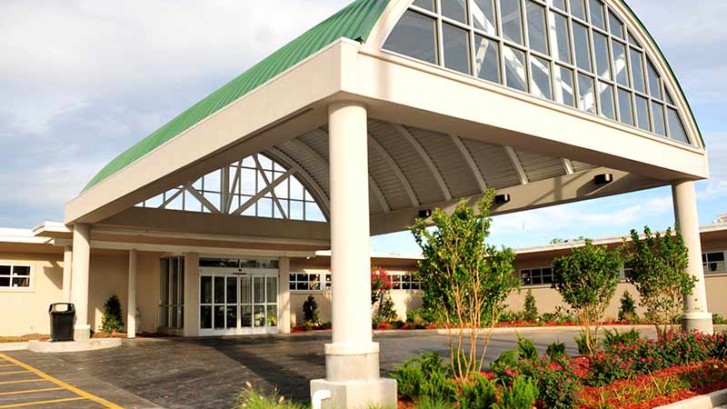Telehealth Command Center Connects Doctors in Jackson, MS with Patients Statewide
Holographic house calls are probably not in the cards, at least in the near future.
But the potential of telehealth to connect patients to their health care team between office visits and expand the resources available to primary care providers is tremendous.
“We have to be resourceful,” said Nurse Practitioner Kristi Henderson, chief telehealth and innovation officer for the University of Mississippi Medical Center (UMMC) in Jackson. “Technology can bring people together in more efficient ways.”
Telehealth encompasses a broad range of technology and can connect patients with their health care team or link health care providers with each other. In addition to video conferencing capability, medical instruments like stethoscopes have gotten high-tech makeovers to allow a nurse or doctor across the state or across the country to hear a patient’s heart beat or look into their ears.
A UMMC telehealth command center in north Jackson is staffed 24/7. There, specialists are connected with hospitals and clinics and provide backup monitoring for ICUs, ERs and post-surgical units.
FILLING GAPS
For primary care, telehealth is about filling gaps, not replacing the primary care provider.
In theory, the technology is there to provide remote primary care. A doctor can examine a patient with a trained assistant handling the diagnostic tools. But the human connection that may be the most effective part of the primary care provider-patient dynamic would be lost.
“Relationships are as important to health as medicine,” said Marilyn Sumerford, the executive director of Access Family Health.
Telehealth can bridge the miles for rural patients and their providers by putting them in touch with specialists without having to travel outside their home communities. A number of hospitals and clinics are already using the special video conferencing capabilities to connect to specialists in Jackson and elsewhere.
“It can keep them in their medical home,” Henderson said.
Telehealth has potential to add real-time collaboration, creating a web of support for mid-level providers in the field. Under the current Mississippi regulation, the Board of Medical Licensure and Board of Nursing require nurse practitioners and physician assistants to work in collaboration with or under supervision of physicians. Incorporating telehealth connectivity into the rules could be a boon to rural clinics who struggle with meeting the requirements, like the one that requires a nurse practitioner to be located within 15 miles of a collaborating physician.
“How do we allow people to work at the highest level of their license?” Henderson said. “It’s not a lower standard of care, just different.”
OUTSIDE THE OFFICE
Telehealth opens opportunities for cost-effective medical coaching, especially with chronic conditions, which are a key focus for primary care. It allows the health care team to actively guide patients. When it comes to managing complex conditions, like diabetes or congestive heart failure, the health care team can coach, but it’s the person who has to do the daily work to control the disease.
“Until we start getting patients engaged, we’re not going to get any huge improvements in outcomes,” Henderson said.
Through a public-private partnership, UMMC Center for Telehealth has been working with diabetes patients in Sunflower County. The patients are using special Internet-accessible tablets that automatically capture their weight, blood pressure and blood sugar levels. The patients also use the tablets to share what’s going on physically, emotionally and psychologically with their health care providers in Sunflower County, UMMC specialists and the telehealth center.
The daily information keeps the patients’ health care team in the loop and allows them to correct problems before they become a crisis that could require a trip to the hospital.
The early results show improvement in diabetes management and patients are engaged. One woman said she learned more about her diabetes in a few weeks with the tablet than she had in 15 years.
“For some of them, it’s the first time their diabetes has been controlled, ever,” Henderson said.
Not all telehealth involves talking to a provider over a live video connection. Just like in Mississippi, long distances can separate hospital and home. Oregon Health and Sciences University is using the Health Buddy device to connect with newly discharged congestive heart failure patients who live outside of the Portland metro area.
“With heart failure, self-care is huge, and it changes outcomes,” said Nurse Practitioner Jayne Mitchell, who works with heart failure patients and makes sure they are connected with a primary care physician for follow up.
The device, about the size of a hardback novel, has a small screen and can hook into a phone line or cable connection. It’s easy to use and secure. Each day, the patient puts in weight, heart rate and blood pressure.
The device mixes in trivia questions and checks for possible symptoms. It also quizzes patients to gauge their heart failure management knowledge.
Back at OHSU, Mitchell gets red flags if the patients start showing signs of trouble, like a weight gain that can signal fluid retention. Those patients get a call from Mitchell, who can help them make adjustments to get back on track. The program is set up so the data also gets pushed out to the patient’s primary care provider.
They monitor the patients for 30 days. The early results show fewer of the Health Buddy patients ended up being re-hospitalized within 30 days – less than 20 percent compared with a national average of 24.7 percent.
“There’s a big interest in how to transition patients safely,” said Jean McCormick, a nurse educator who works with OHSU Telehealth. “I think we’re going to see this being used more and more.”
BUILDING ON PROMISE
Population health needs are driving the innovation, but patients need a personal connection to make the changes.
“Call centers are not going to get results,” Mitchell said. “It’s going back to the community of care. They know you. They care about you.”
Henderson wants to see Mississippi embrace telehealth technology and build the infrastructure that opens opportunities to all Mississippi providers. Mississippi law allows physicians to bill for telehealth visits just like office visits.
“My hope is that Mississippi providers will develop a network that is community-based and culturally sensitive,” Henderson said. “I don’t want us to miss the opportunity. National companies are already marketing here.”
Henderson’s biggest fear is that Mississippi ends up with multiple models and proprietary systems that don’t connect with each other, as when different train tracks used a variety of gauges at the dawn of the railroad era.
“It needs to be streamlined with the same network,” Henderson said.


